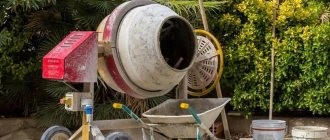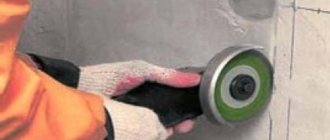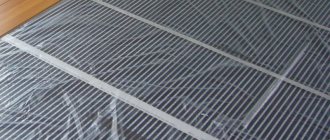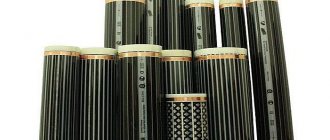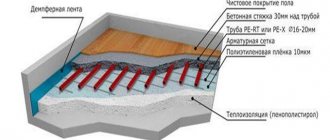Home |Cement |Warm mortar for ceramic blocks
Date: January 5, 2019
Comments: 0
The use of ceramic blocks, characterized by a porous structure, is common in the construction of various objects. The products are in demand in the construction of private buildings, as they are durable, have high performance characteristics, and retain the heat of the room well.
For laying ceramic blocks, it is advisable to use special solutions to prevent the formation of cold bridges. To ensure reliability, quality and comfortable operation of the building under construction, masonry mortars must have a low thermal conductivity coefficient. This is achieved by introducing special fillers characterized by low density.
Warm masonry mortar significantly reduces heat loss, reduces the weight of the structure being built, and reduces the need for binding materials used for laying blocks. Let us dwell in detail on the types, characteristics, advantages, preparation features, and consumption of compositions for laying blocks of porous composites.
Thermal insulating masonry mortar LM is specially designed for porous bricks and blocks, which significantly reduces heat loss through mortar joints
What is used for laying blocks?
When purchasing blocks made from ceramic composites, developers are wondering which masonry mortars are best to use? The following options are possible:
- use warm mortar produced in production conditions for the construction of block walls. It is made on the basis of expanded clay or perlite filler and is supplied in sealed packaging. It is characterized by the presence of modified components and special plasticizers that reduce consumption, are resistant to negative temperatures and affect plasticity;
- Prepare your own perlite-cement mixture using crushed perlite. Perlite is popular among developers who individually prepare the composition for laying ceramic blocks. It is mixed with cement in a ratio of 1:3 with the addition of a special plasticizer, which increases the plasticity of the building mixture. Mixing is carried out in a concrete mixer for a limited time, which is due to the ability of perlite to granulate and form dense lumps;
- use traditional sand-cement mortar, the only advantage of which, compared to the above options, is its low cost. Ensuring plasticity is achieved by introducing plasticizers for dry mixtures. But this does not solve the problem of heat loss due to the formation of cold bridges.
Let's look at how warm mixtures differ from those traditionally used based on cement and sand.
For laying external single-layer walls made of blocks, heat-insulating lightweight warm mortars should be used
Consumption of mortar for laying blocks
For laying 1 m2 of a single-layer wall
from smooth blocks 30 - 40 cm thick. Approximately
20 - 30 liters of mortar are needed
with a joint thickness of 10-12 mm.
For buildings with a height of 1-2 floors, it is possible to further reduce heat loss through the mortar joint, as well as reduce its consumption.
To do this, when laying the mortar, apply it in two stripes along the outer and inner surfaces of the wall, leaving in the middle of the wall an air gap in the seam 1/3 - 1/4 wide of the width of the block. This measure reduces the thermal conductivity of the seam, but at the same time reduces the load-bearing capacity of the masonry - therefore it is used only for buildings of small height.
A smaller amount of mortar will be needed if you use blocks with a tongue-and-groove connection of vertical joints for masonry. In this case, vertical seams are not filled with mortar.
The use of warm, lightweight masonry mortar can significantly improve the thermal conductivity of the wall compared to conventional mortar, but not so much as to be on par with an adhesive joint. In addition, the consumption of glue is several times less than that of a light solution, and the price of ready-made dry mixtures of glue and solution is almost the same.
Warm light masonry mortar is not recommended for laying walls that can be intensively moistened - foundation, basement, basement.
For information on laying gas silicate and aerated concrete blocks with glue, read the article Laying gas silicate and aerated concrete blocks with glue.
Next article:
Interior finishing of aerated concrete walls
Previous article:
Laying walls from aerated concrete blocks - video tutorial
More articles on this topic
- Cheap shallow foundation for a house in a swamp
- Correct wooden house made of construction timber
- Wooden floor on joists on the first floor of a private house
- Height, dimensions, waterproofing and insulation of the basement of the house
- Calculation of a reinforced concrete beam for a prefabricated monolithic floor
- Ventilation of a frame house or house made of SIP panels
- Interior decoration of house walls made of aerated concrete, gas silicate
- Materials for the construction of a single-layer external wall of a house
Comparison with sand-cement mortar
The cement-sand composition used for masonry is a cold one, in which sand is used, which differs in thermal conductivity properties from expanded clay chips and perlite filler used in warm compositions.
Warm mortar for building walls using ceramic blocks is significantly different from traditional cement mortar with the addition of sand. Main distinctive points:
- Consumption during laying. Warm masonry mortar has a plastic consistency that provides a high degree of contact with the ceramic block, the cavities of which cover more than half of the surface of the product. This contributes to a significant reduction in the consumption of the mixture (up to 1.8 times compared to cement-sand) used in the construction of walls. The cement-sand mixture does not have the required plasticity. It is intensively absorbed into the surface of the ceramic composite and is consumed in an increased volume, which is associated with a significant portion getting into the cavities present on the surface of the blocks.
- Convenience of work. The use of industrially produced masonry compounds allows the construction of walls without wetting the surface of the composites. This is due to the ability of the composition to retain water for a long time. The use of a conventional mixture requires preliminary moistening of the ceramic products in order to ensure good adhesion.
- Economical.
Warm mortar has a reduced volumetric weight compared to standard sand-cement. This is due to the use of lightweight aggregates instead of sand, which significantly reduce the mass of the masonry. The result is a reduction in the load on the foundation, on the construction of which you can seriously save money. Warm masonry mortars are prepared using cement and lightweight aggregates - expanded clay or perlite sand, polystyrene foam granules - Reduced heat loss. The improved thermal insulation characteristics of the finished composition correspond to the thermal insulation characteristics of porous composites and correspond to them in terms of the coefficient of thermal resistance. The reduced coefficient of thermal resistance of a standard cement-sand mortar contributes to the formation of cold bridges and increased heat losses.
Significantly superior to cement-sand mortar in most characteristics, warm masonry mortar occupies a leading position among building mixtures used for the construction of walls made of ceramic blocks.
Thermal insulating masonry mixture Linker Thermo Profit, 25 kg
436
In stock
For laying wall building materials with high thermal insulation properties (lightweight hollow large-format ceramic blocks, lightweight hollow bricks with vertical voids, porous concrete and concrete blocks with porous aggregates, as well as for filling and sealing cracks and voids. Homogeneous masonry without heat loss in masonry joints . For interior and exterior use.
BUY
Art. 0787
Moscow and region: MKAD, Kaluzhskoe sh., 4, building 5 10 Availability as of 08/02/2021
Advantages
Warm mixtures for laying ceramic composites are produced using advanced technologies and are popular among builders of various levels. They have many serious advantages, the main of which are:
- high quality of products produced using industrial technology with strict adherence to the requirements of the quality system in force at the manufacturer;
- increased thermal insulation characteristics, ensuring a comfortable thermal condition of the room by reducing heat loss occurring through cold bridges;
- plastic consistency of the composition, which helps retain moisture and reduces the need for the composition when doing masonry;
During masonry work, it is necessary to provide protection for masonry joints from too rapid drying and atmospheric influences - sun, rain, frost
- low specific gravity, due to which the total mass of the structure being erected and the forces acting on the base of the building are reduced;
- high level of sound absorption, creating a favorable acoustic environment in the room and making it difficult for extraneous noise to penetrate;
- fire-retardant characteristics that allow them to withstand elevated temperatures for a long time while maintaining strength;
- affordable price, allowing developers with average financial capabilities to use mixtures for laying ceramic composites;
- high decorative characteristics, providing a presentation after hardening and the possibility of use in interior decoration.
The use of warm mortars for laying blocks is a guarantee of the strength of the walls being erected, the reliability of buildings and a comfortable thermal regime in the room.
Thermal insulating masonry mixture Linker Thermo Winter series, 20 kg
462
In stock
For laying wall building materials with high thermal insulation properties (lightweight hollow large-format ceramic blocks, lightweight hollow bricks with vertical voids, porous concrete and concrete blocks with porous aggregates, as well as for filling and sealing cracks and voids. Homogeneous masonry without heat loss in masonry joints . Reinforced with fiber fibre. For indoor and outdoor use. In an extended temperature range up to -10°C.
BUY
Art. 2408
To order
Moscow and region: To order
Preparation for use
Regardless of the manufacturer of the heat-insulating masonry composition, before starting work, a preparatory stage should be carried out, including:
- Removing dust, grease stains and dirt from masonry blocks.
- Control of surface horizontality and assessment of strength properties.
- Preparation of the composition for laying ceramic blocks, according to the manufacturer’s recommendations.
General rules for preparing warm mixtures include mixing with water in the required proportions, settling and re-mixing. The consistency should be plastic and, at the same time, hard. The resulting composition should be protected from direct sunlight, temperature fluctuations, high humidity and dirt.
Thermal insulating masonry mixture Linker Thermo, 20 kg
428
In stock
For laying wall building materials with high thermal insulation properties (lightweight hollow large-format ceramic blocks, lightweight hollow bricks with vertical voids, porous concrete and concrete blocks with porous aggregates, as well as for filling and sealing cracks and voids. Homogeneous masonry without heat loss in masonry joints . Reinforced with fiber fiber. For interior and exterior use.
BUY
Art. 1661
Moscow and region: Central warehouse 2034 Availability as of 08/02/2021
Positive Features
If the masonry is done with high quality, then cold bridges will be eliminated, which will increase the resistance to the heat transfer process by 30%. Lightweight fillers can reduce the pressure exerted by the materials at the base of the walls on the foundation. Savings can also be achieved by reducing the volume of mortar during laying. It has excellent moisture-retaining characteristics, so it can be used in fine-seam technology.
Warm mortar can be laid in seams that have high thermal conductivity, which reduces heat flow through the masonry to the outside. In addition, the described composition is also vapor permeable, so the house will maintain ideal humidity conditions for humans. Condensation will not form on the walls. All this eliminates the appearance of mold and mildew on surfaces.
If the walls were built using warm mortar, then the owners have an excellent opportunity to save on heating the house and its maintenance. The consumption of the composition in the case of using ceramic blocks is reduced by 1.75 times compared to a conventional cement-sand mixture. This is due to the low density of the former.
Significant advantages of warm mortar for laying ceramic blocks
During construction, you must adhere to those components that are indicated in the approved project. In this case, a comparison with food products would be appropriate. A cake prepared with the addition of butter, vegetable fat, or margarine will differ in its taste. Likewise, a house made of ceramics using warm mortar will be better than the same structure using cement mortar. Advantages of using a warm solution:
- high-quality connection of blocks without the appearance of “cold bridges”;
- increase in energy efficiency (by 30% or more);
- high strength;
- long service life;
- environmental friendliness and health safety;
- cost-effectiveness associated with the use of thin-seam masonry technology;
- high level of moisture retention;
- affordable price.
Although warm mortar for laying ceramic blocks is higher in cost than conventional cement and sand, its use guarantees high quality of constructed buildings. For a specialist this will be immediately visible, but for the consumer it will appear during the operation of the building.
READ ON THE TOPIC: Size of ceramic bricks and its characteristics


